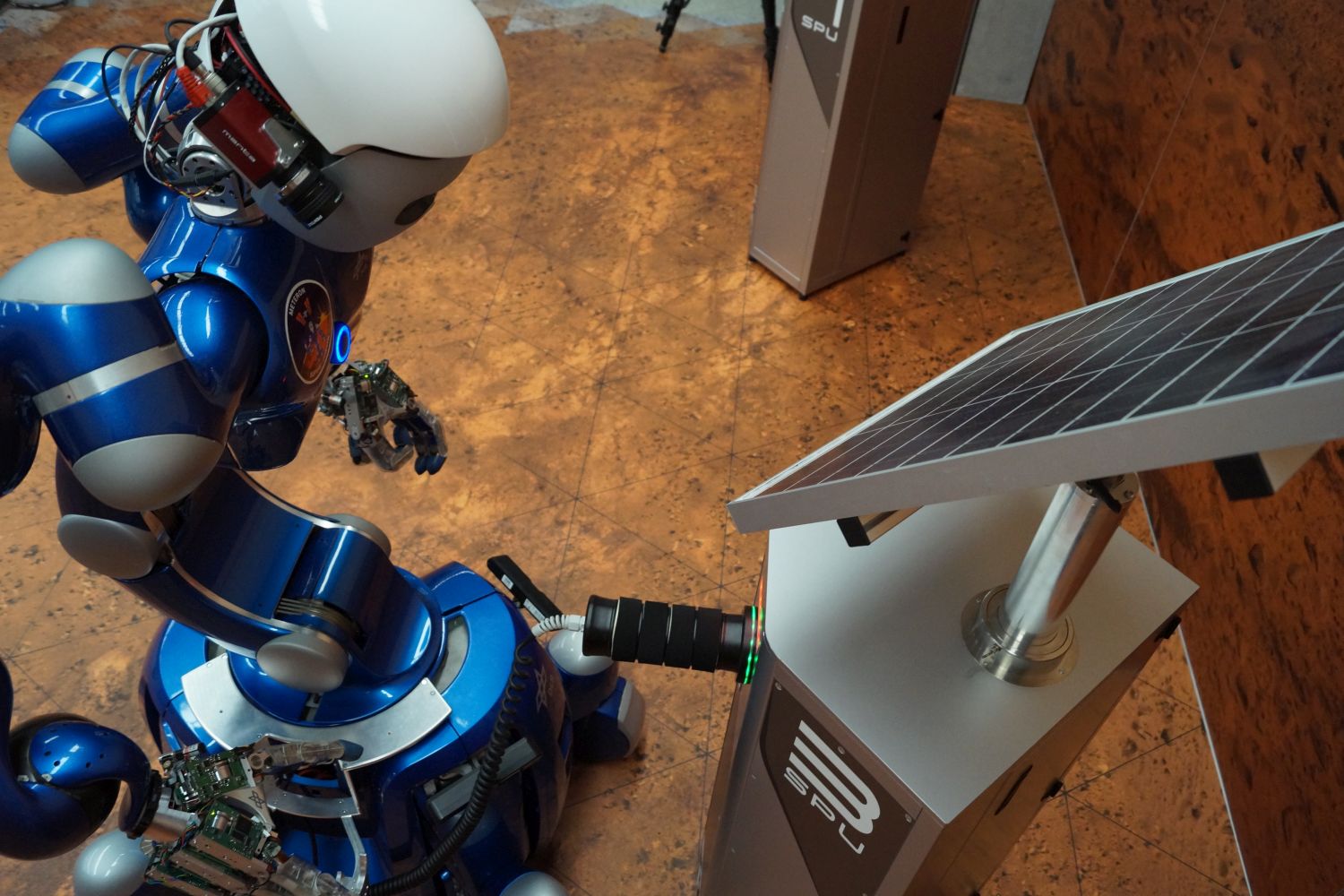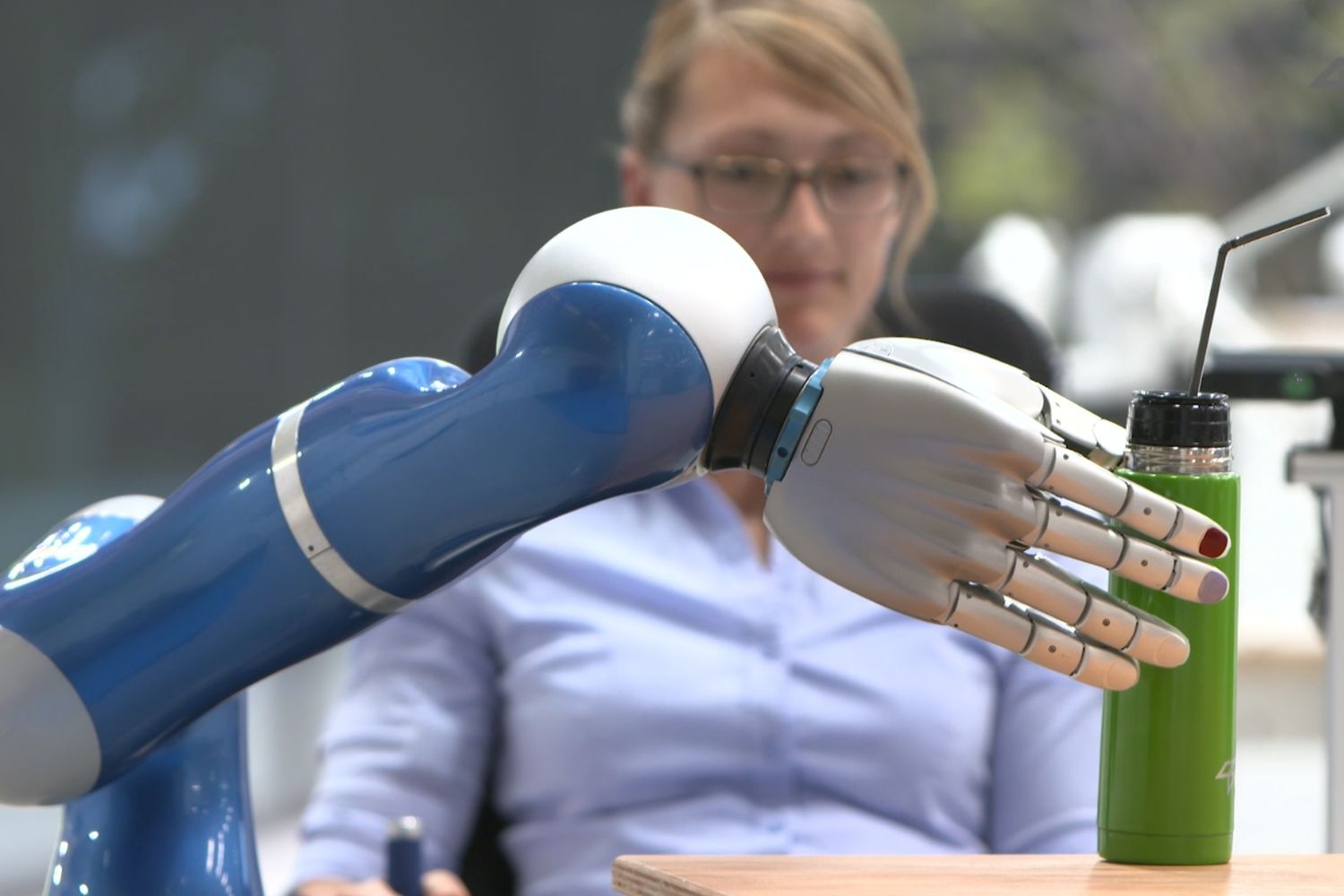Rollin’ Justin Carries the Water
Author: Regina Weinrich
Robots are already sighted in hospitals and nursing homes. Their mission is to bring water or pills to the patients and to help with the memory training. But Rollin’ Justin or Edan are far away from replacing the nursing staff.
“No”, says Birgit Graf laughing, “Nurses will not be replaced by robots in the next 20 or 30 years. The question is whether this will ever become reality at all.” The scientist needs to know, because robotics in nursing is her specialty. She has been researching this for several years at the Stuttgart-based Fraunhofer Institute for Manufacturing Engineering and Automation IPA and is thus very close to another topic: the nursing crisis in an outdated society.
Personnel is scarce in many hospitals and old people’s homes, and since the job can be very strenuous, there is a shortage of junior staff. Sickness rates always rank high in the statistics, and quite a few nursing staff leave early due to the high physical and psychological strain. Alexander Huhn knows the problem only too well. He is the district manager of the Caritas Centre in Garmisch-Partenkirchen, which also includes an outpatient nursing service and the St. Vinzenz old people’s home. The Upper Bavarian municipality is, so to speak, a focal point in the state – almost a third of the approximately 30,000 inhabitants are over 65 years old.
Huhn will therefore enter basic research with his home in the course of the coming year. Over the next five to eight years, “Edan”, a wheelchair with a robot arm, and “Justin”, an already rather independent robot, will be used in conjunction with the German Aerospace Center (DLR) in Oberpfaffenhofen to investigate how the two machines developed for space travel can support human activities as assistance systems. The focus will be on the ideas and wishes of employees and senior citizens.
“We’re at the very beginning,” stresses Huhn. “And the care will always remain with the person,” he also says. But tablets or water could be brought by a robot, just as it could probably take over memory training or mobilization measures, and it could also be helpful with care documentation via voice control. The sector also expects a great deal from support in lifting and moving people.
Robots will only take on supporting functions
“There’s indeed a huge demand,” says Birgit Graf. Supplementing the functions of existing lifts with robotic assistance functions, in order to simplify the usage for the staff, however, is a big challenge. “Safety plays an important role in developing new solutions, after all, you operate with powerful motors directly on people,” she explains. In addition, such a device has to be economically justifiable. This depicts a requirement, which is not fulfilled due to many currently available research platforms which are designed as all-rounders. As in all other areas of application, however, the robots would in future also have only a supporting function here. “Only the caregiver can assess whether the person is in the right position or feels pain.”
Robots are already on their way for tasks such as those in conventional logistics or the automotive industry. In large hospitals, they transport laundry or food; even the concept of an intelligent care car could soon no longer be found only as a prototype. It automatically provides the nursing staff with the necessary utensils, documents their consumption and moves autonomously to the storage to get a refill. The robot was tested for several months in two nursing homes and a hospital – with a positive echo.


“Models which can actively pitch in with their arms do not belong to the currently available or almost production-ready robots,” notices scientist Graf. “This is the following step.” On the one hand, basic safety questions need to be clarified first. Otherwise, the surroundings for possible usage is utterly complex which demands higher requirements concerning the robot’s sensor technology and data processing. “I assume that after 15 years we will have the first systems in use,” says CEO Huhn. He adds that it was important to be there from the very beginning when the course was set for the future, “after all, we also want to take part in discussing social and ethical issues.“



